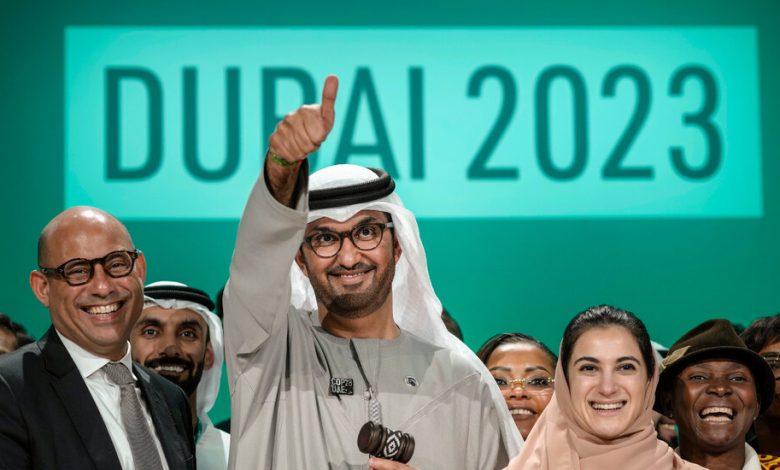What No One at COP28 Wanted to Say Out Loud: Prepare for 1.5 Degrees

It only took 28 years. When Sultan Ahmed Al Jaber banged his gavel on the resolution text of COP28 in Dubai on Wednesday, it marked what has been widely called a historic achievement: the first time nearly every country on Earth agreed that oil and gas play a role in driving global warming, and the first time they nodded toward the need for a fossil fuel drawdown.
For a historic text, the language was quite mealy-mouthed, since the resolution only “calls on” nations to “contribute” to “transitioning away” from fossil fuels — and only in the energy sector. Harder-line climate advocates had been pushing for a language of “phase out,” which might have helped tug the world a little bit more quickly to a postcarbon future. Instead, what they got was much more like an endorsement of the status quo, reflecting the ongoing state of play rather than accelerating it, because such a transition is already well underway.
Global sales of internal-combustion engine vehicles peaked in 2017. Investment in renewable energy has exceeded investment in fossil fuel infrastructure for several years running now. In 2022, 83 percent of new global energy capacity was green. The question isn’t about whether there will be a transition, but how fast, global and thorough it will be.
The answer is: not fast or global or thorough enough yet, at least on the current trajectories, which COP28 effectively affirmed. To limit warming to 1.5 degrees Celsius now requires entirely eliminating emissions not long after 2040, according to the Global Carbon Project, whose “carbon budget” for 1.5 degrees Celsius will be exhausted in about five years of current levels of emissions. For 1.7 degrees Celsius, it’s just after 2050, and for 2 degrees Celsius, 2080. And despite Al Jaber’s claim that COP28 has kept the 1.5 degree goal alive, hardly anyone believes it’s still plausible.
Instead, most analysts predict a global peak in fossil fuel emissions at some point over the next decade, followed not by a decline but a long plateau — meaning that, every year for the foreseeable future, we would be doing roughly as much damage to the future of the planet’s climate as was done in recent years. The expected result: end-of-century warming between 2 and 3 degrees Celsius.
Not very long ago, this was a future that terrified us — the world beyond the goals of the Paris agreement looking tremendously bleak. Now, we are not just coming to accept that future but, in some corners, applauding it as progress.
We are having trouble retrieving the article content.
Please enable JavaScript in your browser settings.
Thank you for your patience while we verify access. If you are in Reader mode please exit and log into your Times account, or subscribe for all of The Times.
Thank you for your patience while we verify access.
Already a subscriber? Log in.
Want all of The Times? Subscribe.
